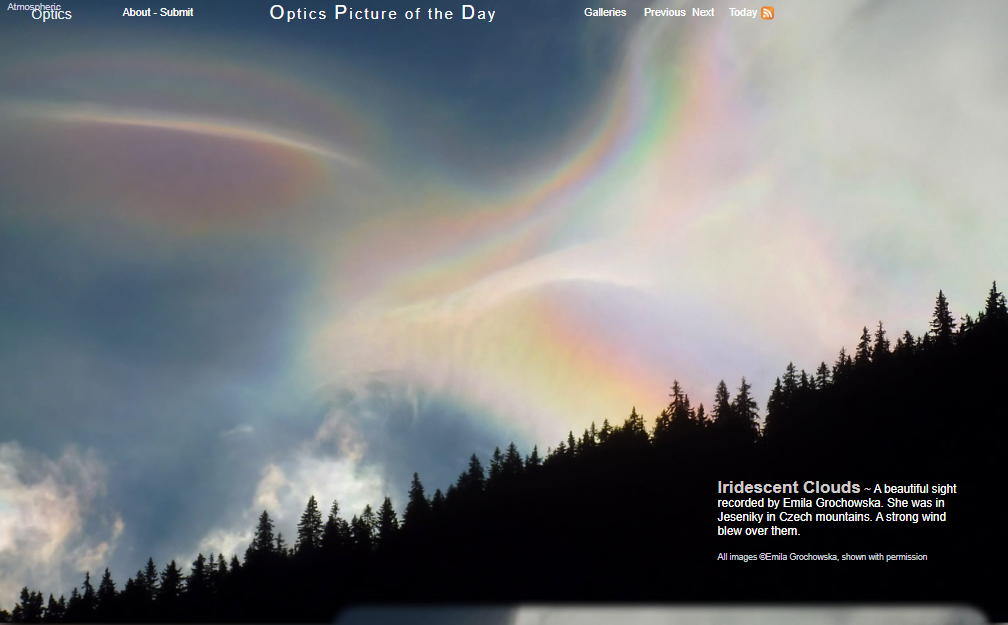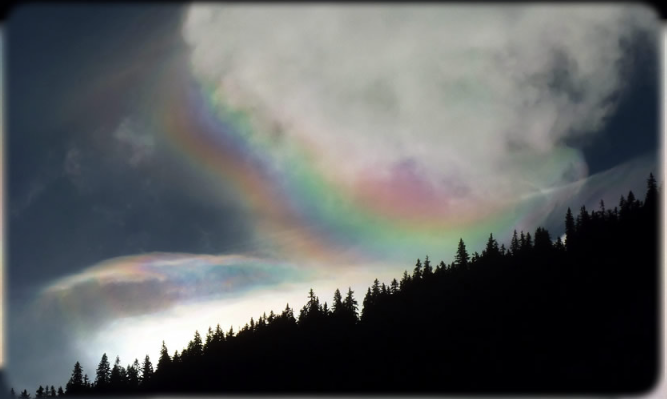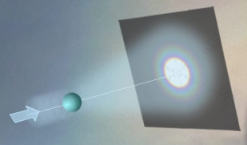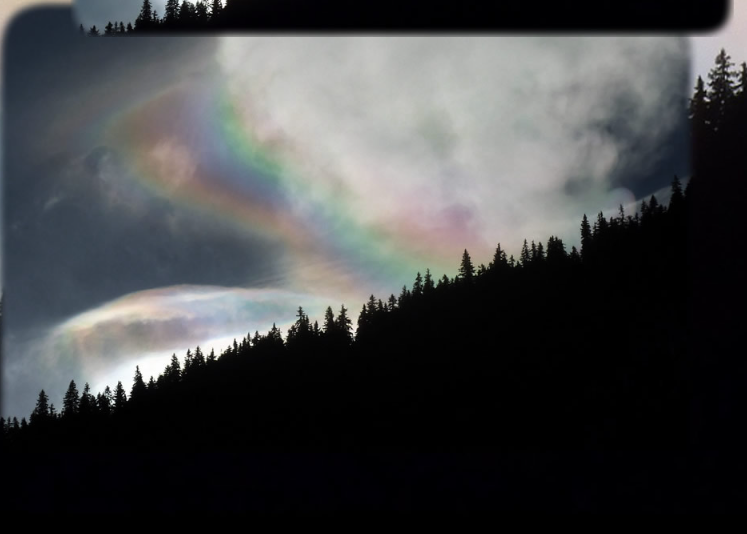Cloud Iridescence - OPOD
Cloud Iridescence - A Phenomenon of Nature's Color Show
Have you ever looked up at the sky and witnessed a breathtaking display of colors swirling and shifting within the clouds? If so, you may have experienced the mesmerizing phenomenon known as cloud iridescence. This captivating display of vibrant hues is caused by the diffraction of sunlight by individual water droplets within the clouds.
Cloud iridescence is not a collective process, as it may initially appear. Rather, it is an individual phenomenon that occurs when sunlight interacts with tiny water droplets suspended in the atmosphere. Each of these droplets scatters sunlight, creating its own unique sky diffraction pattern. The illusion of coherence arises when droplets within a specific region of the cloud are similar in size and produce similar diffraction patterns.
The colors observed during cloud iridescence can vary from minute to minute, creating a dynamic and ever-changing spectacle. This variability is due to the movement, growth, and evaporation of water droplets within the cloud. As different-sized droplets interact with sunlight, they produce different diffraction patterns, resulting in a kaleidoscope of colors.
To fully appreciate the intricacies of cloud iridescence, let's delve into the science behind this captivating phenomenon. When sunlight passes through the Earth's atmosphere, it undergoes a process called scattering. This scattering occurs when light interacts with particles in the atmosphere, such as water droplets or ice crystals.
The size of these particles plays a crucial role in determining the type of scattering that takes place. In the case of cloud iridescence, the scattering is predominantly caused by small water droplets within the clouds. These droplets act as tiny prisms, bending and dispersing sunlight into its constituent colors.
The specific colors observed during cloud iridescence are determined by the size of the water droplets. Smaller droplets tend to scatter shorter wavelengths of light, such as blue and violet, while larger droplets scatter longer wavelengths, such as red and orange. This variation in scattering angles leads to the vibrant range of colors seen in iridescent clouds.
Cloud iridescence is most commonly observed in altocumulus, cirrocumulus, and lenticular clouds. These cloud formations are often characterized by their layered or wavy structures, providing the ideal conditions for the diffraction of sunlight by water droplets.
To witness this awe-inspiring phenomenon, it is important to be in the right place at the right time. Cloud iridescence is more likely to occur when the sun is low on the horizon, either during sunrise or sunset. The angle of the sunlight interacting with the clouds enhances the potential for diffraction and the subsequent display of vibrant colors.
As with any natural phenomenon, cloud iridescence remains unpredictable and elusive. It is a fleeting moment of beauty that reminds us of the awe-inspiring wonders of our atmosphere. So, next time you find yourself gazing at the sky, keep an eye out for the magical dance of colors within the clouds – a true testament to the remarkable artistry of nature.

Iridescent Clouds ~ A beautiful sight recorded by Emila Grochowska. She was in Jeseniky in Czech mountains. A strong wind blew over them.
All images ©Emila Grochowska, shown with permission

Colours swirl, shift and change from minute to minute. Whole domains of different sized water droplets move, grow, evaporate within the changing clouds to yield the colours.
The process appears collective, film like, but that is a deception. It is individual. Single droplets each scatter sunlight into their own sky diffraction pattern. The apparent coherence comes only because the droplets in a given domain are of similar size and each generate a similar diffraction pattern.


Note: this article has been automatically converted from the old site and may not appear as intended. You can find the original article here.
Reference Atmospheric Optics
If you use any of the definitions, information, or data presented on Atmospheric Optics, please copy the link or reference below to properly credit us as the reference source. Thank you!
-
<a href="https://atoptics.co.uk/blog/cloud-iridescence-opod/">Cloud Iridescence - OPOD</a>
-
"Cloud Iridescence - OPOD". Atmospheric Optics. Accessed on November 26, 2024. https://atoptics.co.uk/blog/cloud-iridescence-opod/.
-
"Cloud Iridescence - OPOD". Atmospheric Optics, https://atoptics.co.uk/blog/cloud-iridescence-opod/. Accessed 26 November, 2024
-
Cloud Iridescence - OPOD. Atmospheric Optics. Retrieved from https://atoptics.co.uk/blog/cloud-iridescence-opod/.